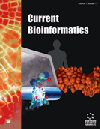- Home
- A-Z Publications
- Current Bioinformatics
- Previous Issues
- Volume 16, Issue 8, 2021
Current Bioinformatics - Volume 16, Issue 8, 2021
Volume 16, Issue 8, 2021
-
-
Ensemble Adaptive Total Variation Graph Regularized NMF for Singlecell RNA-seq Data Analysis
More LessAuthors: Ya-Li Zhu, Ying-Lian Gao, Jin-Xing Liu, Rong Zhu and Xiang-Zhen KongBackground: Single-cell RNA sequencing techniques have emerged as effective approaches for finding the heterogeneity between cells and discovering the differentiation stage. Adaptive total variation graph regularized nonnegative matrix factorization (ATV-NMF) has been proposed to capture the inner geometric structure and determine whether to retain feature details or denoise, which is suitable for analyzing single- Read More
-
-
-
Effect of Various Sequence Descriptors in Predicting Human Proteinprotein Interactions Using ANN-based Prediction Models
More LessAuthors: Pankaj S. Dholaniya and Samreen RizviAims: A number of sequence-based descriptors for proteins have been proposed by many researchers. This study aims to evaluate the performance of these descriptors in predicting protein-protein interactions on the benchmark dataset. Background: The behavior of a protein inside or outside the cell is defined by its interaction with the elements present in the surrounding environment, which include small metabolite Read More
-
-
-
Identification of Risk Molecular Subtype of Colon Cancer with Lymphovascular Invasion
More LessAuthors: Qing Jin, Binhua Liang, Xiujie Chen and Huiwen LiuBackground: Although surgical resection generally yields excellent outcomes, a number of patients with colon cancer still have relapse or metastasis after surgery. Adjuvant chemotherapy in tumor stage III has been demonstrated to eradicate micrometastasis and improve survival, whereas the benefits of adjuvant chemotherapy in tumor stage II remain controversial. The leading cause is the lack of understanding o Read More
-
-
-
PREDAIP: Computational Prediction and Analysis for Anti-inflammatory Peptide via a Hybrid Feature Selection Technique
More LessAuthors: Dan Lin, Jialin Yu, Ju Zhang, Huan He, Xinyun Guo and Shaoping ShiBackground: Anti-Inflammatory Peptides (AIPs) are potent therapeutic agents for inflammatory and autoimmune disorders due to their high specificity and minimal toxicity under normal conditions. Therefore, it is greatly significant and beneficial to identify AIPs for further discovering novel and efficient AIPs-based therapeutics. Recently, three computational approaches, which can effectively identify potential AIPs, hav Read More
-
-
-
Informative Gene Selection Based on Cost-Sensitive Fast Correlation- Based Filter Feature Selection
More LessAuthors: Yueling Xiong, Qingqing Li, Peipei Wang and Mingquan YeBackground: Informative gene selection is an essential step in performing tumor classification. However, it is difficult to select informative genes related to tumors from large-scale gene expression profiles because of their characteristics, such as high dimensionality, relatively small samples, and class imbalance, and some genes are superfluous and irrelevant. Objective: Many researchers analyze and process gene expressio Read More
-
-
-
PSO-ELM with Modified Acceleration Coefficients for Classifying the Active Compound
More LessAuthors: Dian E. Ratnawati, Marjono Marjono and Nashi WidodoBackground: The classification of active compounds based on their function using machine learning is essential for predicting the function of new active compounds quickly. These classification results are beneficial to accelerate the work of laboratory assistants in identifying the function of active compounds. In this study, an active compound is represented by the Simplified Molecular-Input Line-Entry System (SMILES) code. Read More
-
-
-
Highly Accurate Gene Essentiality Prediction with W-Nucleotide Z Curve Features and Feature Selection Technique in Saccharomyces cerevisiae
More LessAuthors: Wen-Xin Zheng, Shu-Xuan Wang and Hong LiuBackground: Many studies have been conducted on essentiality prediction in the Saccharomyces cerevisiae genome, but the accuracy is not as high as those in bacterial or human genomes. The most frequently used features are Protein-Protein Interaction (PPI) networks combined with some other features, such as evolutionary conservation, expression level, and protein domain information. Sequence composition featu Read More
-
-
-
DeepFusion-RBP: Using Deep Learning to Fuse Multiple Features to Identify RNA-binding Protein Sequences
More LessAuthors: Xu Wang, Shunfang Wang, Haoyi Fu, Xiaoli Ruan and Xianjun TangBackground: RNA-binding protein plays an important role in regulating splicing, RNA transport, and other post-transcriptional processes, identifying special RNA binding domains, and interacting with RNA. Objective: This paper proposes a deep learning framework, DeepFusion-RBP, composed of three submodels. A sliding window is used to obtain sub-sequences, local features are obtained, and then the model is customized for e Read More
-
-
-
Identification of Cancer Trait Genes and Association Analysis Under Pan-Cancer
More LessAuthors: Shudong Wang, Yuanyuan Zhang, Hongting Mu and Shanchen PangBackground: Different cancers have different sites of origin, cell types, and forms of genetic mutations that manifest different forms of cancers. Therefore, identifying genes associated with cancer traits and analyzing their functions in different cancers is important for understanding the mechanisms of cancer. Objective: The purpose of this paper is to make up for the shortcomings of single tumor analysis and realize the Read More
-
Volumes & issues
-
Volume 20 (2025)
-
Volume 19 (2024)
-
Volume 18 (2023)
-
Volume 17 (2022)
-
Volume 16 (2021)
-
Volume 15 (2020)
-
Volume 14 (2019)
-
Volume 13 (2018)
-
Volume 12 (2017)
-
Volume 11 (2016)
-
Volume 10 (2015)
-
Volume 9 (2014)
-
Volume 8 (2013)
-
Volume 7 (2012)
-
Volume 6 (2011)
-
Volume 5 (2010)
-
Volume 4 (2009)
-
Volume 3 (2008)
-
Volume 2 (2007)
-
Volume 1 (2006)
Most Read This Month
Article
content/journals/cbio
Journal
10
5
false
en


